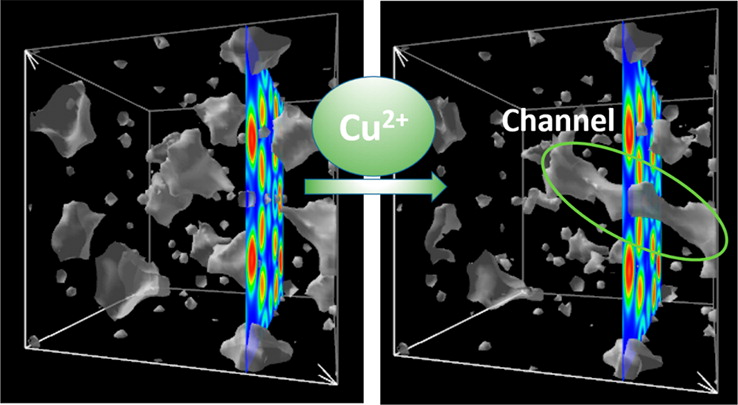Framework and Channel Modifications in Mayenite (12CaO· 7Al2O3) Nanocages By Cationic Doping
Abstract
Mayenite (Ca12Al14O33, C12A7), and its electride variant (C12A7:2e–) have attracted attention as functional materials with high ionic conductivity, and for potential uses in oxidation catalysis, fuel cells, and hydrogen storage. In contrast to anionic substitutions into C12A7, less is known about the influence of cationic substitutions on this material. This study applies DFT methods to rigorously understand the influences of Mg2+, Cu2+, Sr2+, Fe3+, Ir4+, P5+ and V5+ (2+ ≤ ZV ≤ 5+, where ZV is the cation valence, unitless) substitutions on the structural and electronic features of C12A7 and its electride variant. Substitutions alter the lattice parameters, in relation to their size, and alter charge localization. Substitutions also affect mayenite’s cage framework, resulting in the formation of a “window” that connects two adjacent cages. While Mg2+, Sr2+, P5+, and V5+substitutions maintain their F+-like attractive nature, Cu2+, Fe3+, and Ir4+ neutralize such a tendency in the cages of their corresponding C12A7 electride. Therefore, the conduction mechanism of mayenite electride (i.e., containing Cu2+, Fe3+, and Ir4+) switches from e–-hopping to band conduction electrons. The insertion of Cu2+-substitutions makes the window between two adjacent nanocages collapse, resulting in the formation of a transport channel between two neighboring [Ca–Al–O] cages for localized electrons. The outcomes suggest novel means to induce electron coupling between nearest-neighbor cages in mayenite, an aspect of interest for tailoring the electron transport properties of mayenite and other light-metal oxide electrides.
